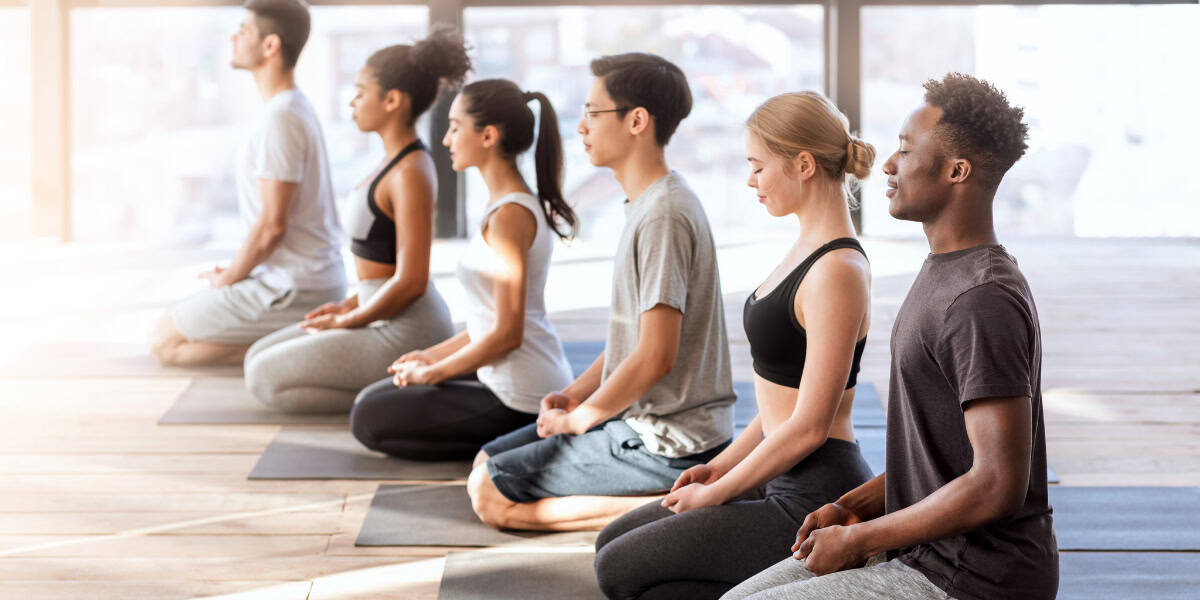Have you ever heard of seated meditation? This ancient practice has long been used to bring peace and mindfulness into people’s lives, but what exactly is it?
Seated meditation is a form of mindfulness practice that involves finding a comfortable seat, settling in, and focusing inwardly on the breath. It often involves closing the eyes and using body-awareness as an anchor for attention, helping to root oneself in the present moment.
This type of meditation can help you become more aware of your thoughts, feelings, and physical sensations.
It is a centuries-old practice that helps to achieve physical stillness and mental clarity, and foster mindfulness.
To enter into a meditative state, one sits comfortably and focuses on breathing or a certain thought or feeling. Repeating mantras or affirmations can help people to find greater inner peace and relaxation.
The principles of seated meditation are:
- Be gentle.
- Be patient.
- Be non-judgmental.
With patience, effort, and dedication, these skills can be developed over time.
Benefits of Seated Meditation
Seated meditation is hugely popular these days. It has many rewards! It can boost focus, clarity, and well-being. It also fights stress and anxiety, boosts sleep, and boosts overall satisfaction with life.
Let’s explore the various benefits of seated meditation and how it can help you live better:
Stress Reduction
Seated meditation brings many benefits, especially stress reduction. You let go of your thoughts and enter a more reflective state. Focusing on your breath or a mantra brings calm to your mind and body.
Long-term meditators often say that regular practice helps reduce anxiety, depression and other negative emotions. As well, it can increase awareness and clarity, and improve energy levels and wellbeing. With practice, you get better at lifting out of moments of feeling overwhelmed or frustrated, into restored balance and clarity.
Improved Concentration
Seated meditation brings many advantages, one of them being improved concentration. This is the foundation for mindfulness and other practices. During meditation, one learns to focus on the breath and ignore distractions. It helps build focus and discipline, allowing you to stay concentrated in day-to-day life.
Moreover, strong concentration has the potential to reduce stress and improve sleep quality, when practicing mindfulness or meditation.
Increased Awareness
Seated meditation is a practice of focusing on the present moment. It has many health benefits, including increased awareness and mindfulness. When done regularly, it can help an individual understand their thoughts, emotions, and bodily sensations. This can lead to responding to life’s challenges with clarity.
It can also improve insight, creativity, concentration, and focus. This can prove useful for personal growth and development. Regular meditation can also help identify negative emotions and/or thoughts, such as anxiety or procrastination, that may be holding one back from achieving goals.
How to Practice Seated Meditation
Seated meditation has been around for thousands of years. It is a way to bring a sense of inner peace, clarity, and wellbeing. Anywhere can be your meditation spot. Sit comfortably and focus on your breath. To enhance the experience, there are many techniques you can use.
Want to learn more? Here’s how to practice seated meditation:
Find a Quiet Place
To discover a good environment for seated meditation, get away from noise, traffic and distractions. Find a spot where you can sit straight, feet flat on the floor and eyes partially closed. If quietness isn’t possible, try noise-canceling headphones or earplugs.
Once you have a tranquil area to meditate, staying in the sitting position is key. Even if it’s uncomfortable, maintain the same spot to create an ideal environment for contemplation. Through regular practice, this spot will become familiar.
Sit Comfortably
The posture for meditation matters. Sit cross-legged to feel balanced and take your focus within. It’s common to sit on the floor, a chair, or cushion with your feet flat.
Align your spine vertically but not rigid. Soften your belly and relax your jaw. Be in whatever posture is natural. Pay attention to how your body feels. This will help the mind to relax.
Focus on Your Breath
Sit in a comfy spot and close your eyes. Notice the air entering and leaving your body. Notice the chest, belly, and sides of the torso expanding with each breath. Observe the breath without trying to control it. Notice thoughts and feelings, but don’t become attached. Come back to the body, the air, and observe without judgement. Take some time away from distractions. Just be with what is arising with every inhalation and exhalation.
Different Types of Seated Meditation
Seated meditation is a form of relaxation. To do it, you sit and take deep breaths. It helps increase your awareness.
There are various kinds of seated meditation. Each one has its own perks and methods. In this article, we’ll go through the different types and how to include them in your practice:
Mindfulness Meditation
Mindfulness meditation is a type of meditating which encourages you to be in the present moment and to become aware of your inner and outer experiences. It has the aim of creating a state of self-awareness, acceptance and insight into your thoughts, feelings, emotions, actions and your environment. Mindfulness can help reduce stress levels, create inner peace and clarity, increase self-compassion, and boost creativity and appreciation for life’s beauty.
When practicing mindfulness meditation, you should be aware not only of your body or breath but also other sensations you experience. A way to practice mindful meditation is to start by focusing on the breath. Just observe the inhaling and exhaling without any reaction or judgement.
- You could count from 1 to 5 for five breaths. Inhale is 1 and then exhale and count each one. This counting helps to concentrate your mind, whilst also being conscious internally.
- Other tips might include noting your body’s posture while breathing calmly. Adjust your position without judging, if needed.
- Then, notice any areas of tension and acknowledge them without either judging them positively or negatively.
- Again, observe the inhale & exhale until tensions resolve normally without any struggle.
This practice can help bring focus and clarity into your daily life matters, leading to higher self-awareness and understanding.
Loving-Kindness Meditation
Loving-Kindness Meditation is a form of meditation that helps you cultivate positive emotions. It’s also known as Metta meditation, from the Buddhist tradition. It focuses on loving kindness, understanding forgiveness and compassion.
The practice starts with repeating phrases such as “May I be well” or “May I be happy” and reflecting inwardly. Then, you move to reflecting outwardly towards others. This includes family members, friends, acquaintances, strangers or even adversaries. Finally, you direct your meditation towards all living beings; wishing them peace, joy and freedom from suffering.
These practices help you build positive thinking patterns and meaningful connections with those around you. They let you develop warm connections that can last in your day-to-day life.
Visualization Meditation
Visualization meditation is a form of seated meditation. It helps you practice mindfulness and become aware of your thoughts. It can reduce stress levels.
The aim of visualization meditation is to reach a meditative state. You imagine different objects, events, or situations in your mind. This can help with self-confidence, healing pain or trauma, and improving clarity.
To practice, sit in a comfortable position or do a yoga posture. Close your eyes and take deep breaths. Visualize yourself on top of a mountain. You are surrounded by nature and blue skies. Feel peace and joy. Appreciate life.
Conclusion
Seated meditation is an ancient tradition. It helps with relaxation of mind, body and spirit. It can also improve physical and psychological well-being. If sitting still for a long time is too hard, try walking meditation.
There are many meditation styles like guided, loving-kindness and mindfulness. As you work on honing your mindfulness skills, be patient with yourself.
Can Seated Meditation be Considered a Form of Prayer?
Seated meditation can be seen as a form of prayer, although there is a difference between meditation and prayer. While prayer involves supplication or communication with a higher power, meditation focuses on mindfulness, self-reflection, and inner peace. Both practices can lead to spiritual growth and connectedness.
Frequently Asked Questions
Q: What is seated meditation?
A: Seated meditation is a practice of mindfulness that involves sitting still and focusing on the present moment. It is a form of spiritual practice that can help you to become more aware of your thoughts, feelings, and bodily sensations.
Q: How do I practice seated meditation?
A: To practice seated meditation, find a comfortable and quiet place to sit. Close your eyes and focus on your breath. Notice the sensations of your body and observe your thoughts without judgment. Let go of any expectations and just be in the present moment.
Q: What are the benefits of seated meditation?
A: Seated meditation can help to reduce stress and anxiety, increase self-awareness, and improve concentration and clarity of thought. It can also help to cultivate compassion and acceptance, as well as promote overall wellbeing.




